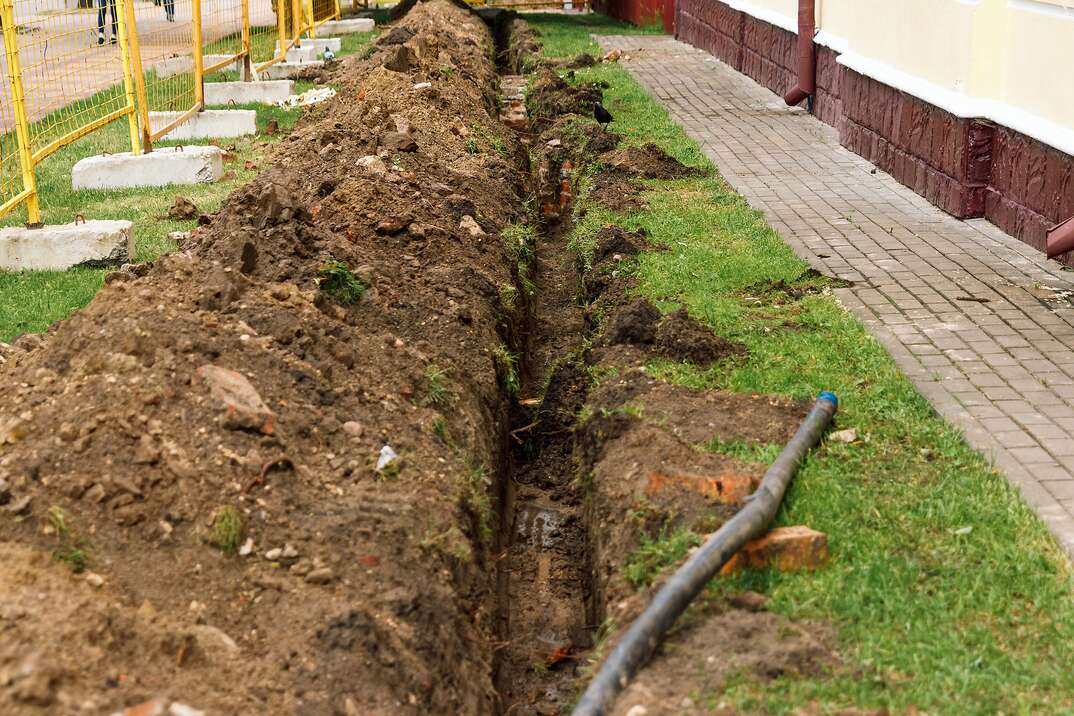- AppliancesElectriciansHVACLandscapingLocksmithPest ControlPlumbingRenovationRoofingT V RepairAll Home Improvement
- Car AccidentClass ActionCorporate LawCriminal DefenseDivorce LawEmployment LawFamily LawFinancial LawLegal AidMedical Injury LawyersMedical MalpracticeReal Estate LawWater Fire RestorationAll Legal
- InvestmentRetirementAll Finance
- Animal InsuranceAutoGeneral InsuranceHealth PolicyHome RentersAll Insurance
- DentalHealth SpecialistsAll Medical
- Animal CareVeterinaryAll Pets
- Auto GlassTowingAll Automotive
French Tips: 12 Things to Know About Installing a French Drain

Standing water can seriously damage your lawn and landscaping and can even put your home's foundations at risk.
Installing a French drain can divert standing water and improve your yard's drainage. If you’re installing a French drain yourself, keep these things in mind.
1. Get Permission
Don't start creating your new French drain until you've got the green light from your local zoning division or homeowners association. Some areas place restrictions on the type of drainage projects you can perform. It's also wise to avoid diverting water to land you don't own.
2. Check for Utility Lines
Accidentally damaging or severing a utility line is an expensive and potentially dangerous mistake. Therefore, it's essential to check if there are lines in the area you want to dig before you start. The 811 "call before you dig" helpline lets you book a free appointment with a technician who will show you where the lines are.
3. Use the Right Materials
Before starting, grab a sturdy shovel, a spirit level and a measuring tape. French drains require a length of perforated drainpipe. To calculate how much you need, take the amount of water you need to divert into account and allow a little extra capacity for extra water that could enter the pipe down the line. You'll also need landscape filter fabric to prevent debris from entering the pipe and causing a blockage, plus enough gravel to cover the drain.
4. Avoid Obstacles
You should keep your drain route at least a meter away from structures like walls. Tree and shrub roots can encroach on the drain and damage the pipework, so steer clear of any large plants.
5. Put the Drain on a Downhill Slope
Building a French drain on a downhill slope lets the water drain naturally and prevents pooling. Ideally, the drain should drop by around 1 foot (30 centimeters) for every hundred meters of the drain. If you don't have a suitable slope, aim to dig your drain progressively deeper along the line so that the water can drain correctly.
6. Make the Drain Mouth the Largest Point
The point where water collects should be slightly wider than the rest of the drain to collect more water and stop it from overflowing during heavy rainfall. Adding a catch basin can also help your drain collect as much water as possible.
7. Make the Trench V-Shaped
It's important to dig your trench deep enough to drain water properly, but you don't need to expend too much energy creating an extremely deep or wide channel. Most French drains are 6 feet (2 meters) wide with a depth of 18 inches (45 centimeters). Digging a V-shaped notch at a 45-degree angle on each side is the easiest and most energy-efficient way to dig a French drain trench.
8. Line Your Trench
One of the most common French drain mistakes is failing to line it. Installing a drain liner will filter out debris and stop the drain from clogging. It's best to use a single length of landscape filter fabric for this job. The weight of the gravel will pull it down, so leave at least 10 inches (25 centimeters) of extra material on each side.
9. Use Enough Gravel to Fill the Trench
Filling the trench with at least 3 inches (8 centimeters) of gravel supports the drainpipe. It also provides extra filtration to keep your drain free from leaves, dirt and other debris. Alternatively, you could use crushed stone to fill your trench.
10. Rake the Gravel
An uneven layer of crushed stone or gravel can cause water to collect at points along the drain's length. It's a good idea to distribute the gravel evenly with a rake before laying the drainpipe to avoid pooling.
11. Point the Pipe Perforations Downward
Another common French drain mistake is pointing the pipe perforations sideways. Incorrectly oriented perforations can stop the water from draining properly. French drains draw water from underneath, so you should point the perforations downward for the best results.
12. Leave Enough Room to Backfill With Soil
Covering the pipe with the excess filter fabric and gravel protects it from dirt and debris. However, ensure that you leave at least 5 inches (13 centimeters) between the top of the gravel layer and the ground to leave enough room for backfilling. Cover the pipe with gravel or crushed stone first, then fold any remaining fabric allowance over the edges.
Fill the remaining 5 inches (13 centimeters) between the gravel and ground level with soil. A soil layer improves drainage and can reduce the likelihood of blockages.
Elocal Editorial Content is for educational and entertainment purposes only. Editorial Content should not be used as a substitute for advice from a licensed professional in your state reviewing your issue. Systems, equipment, issues and circumstances vary. Follow the manufacturer's safety precautions. The opinions, beliefs and viewpoints expressed by the eLocal Editorial Team and other third-party content providers do not necessarily reflect the opinions, beliefs and viewpoints of eLocal or its affiliate companies. Use of the Blog is subject to the
Website Terms and Conditions.The eLocal Editorial Team operates independently of eLocal USA's marketing and sales decisions.

